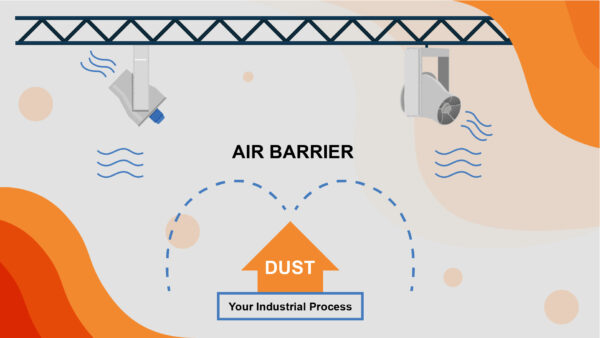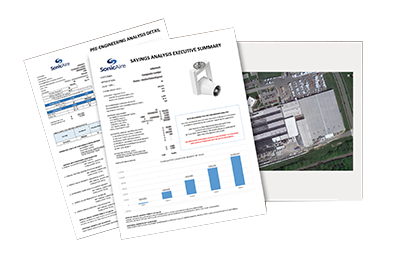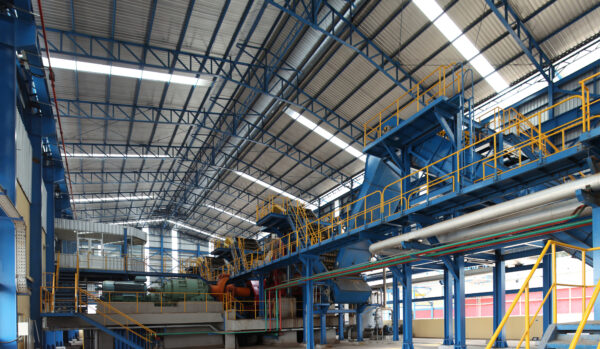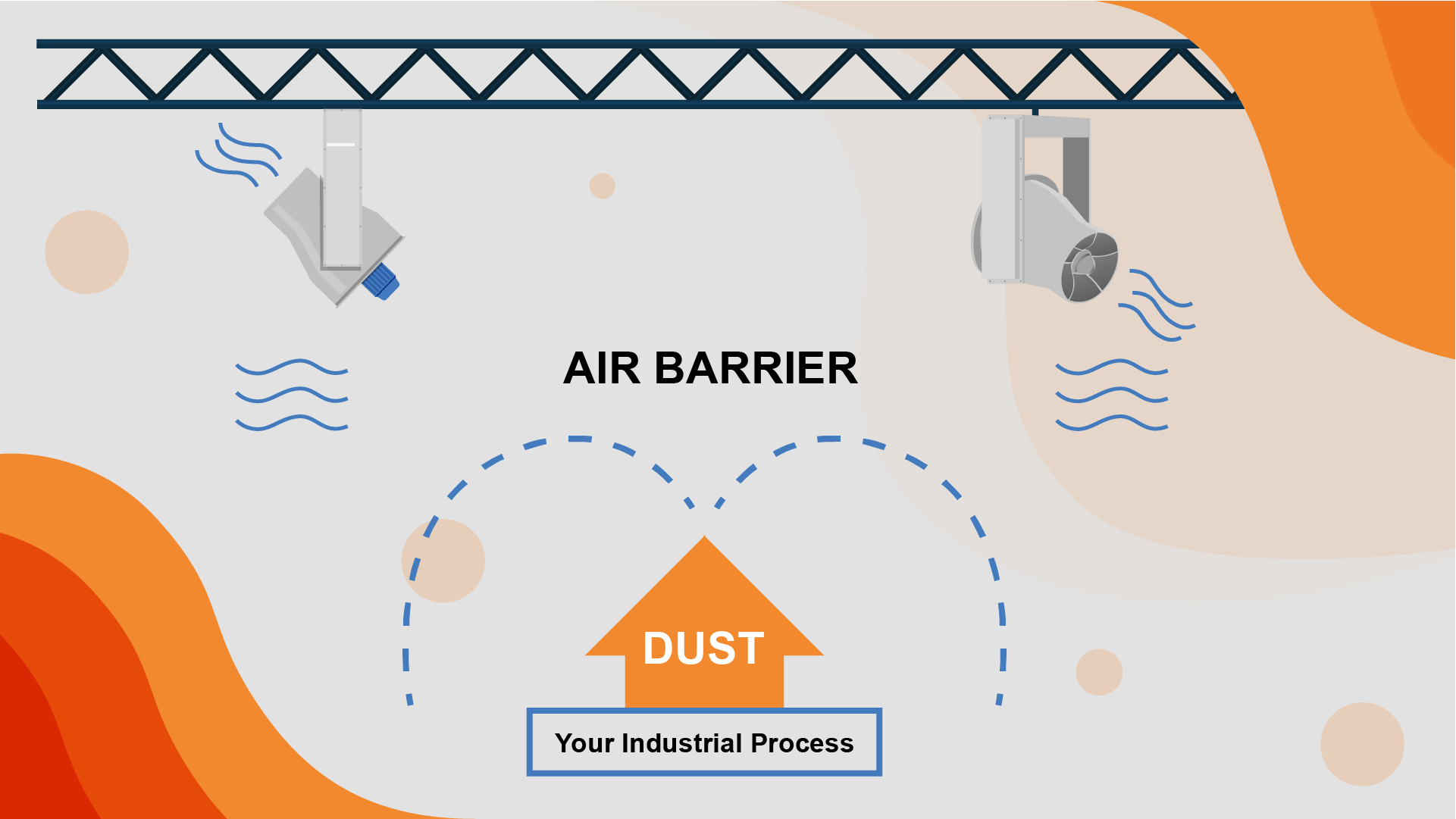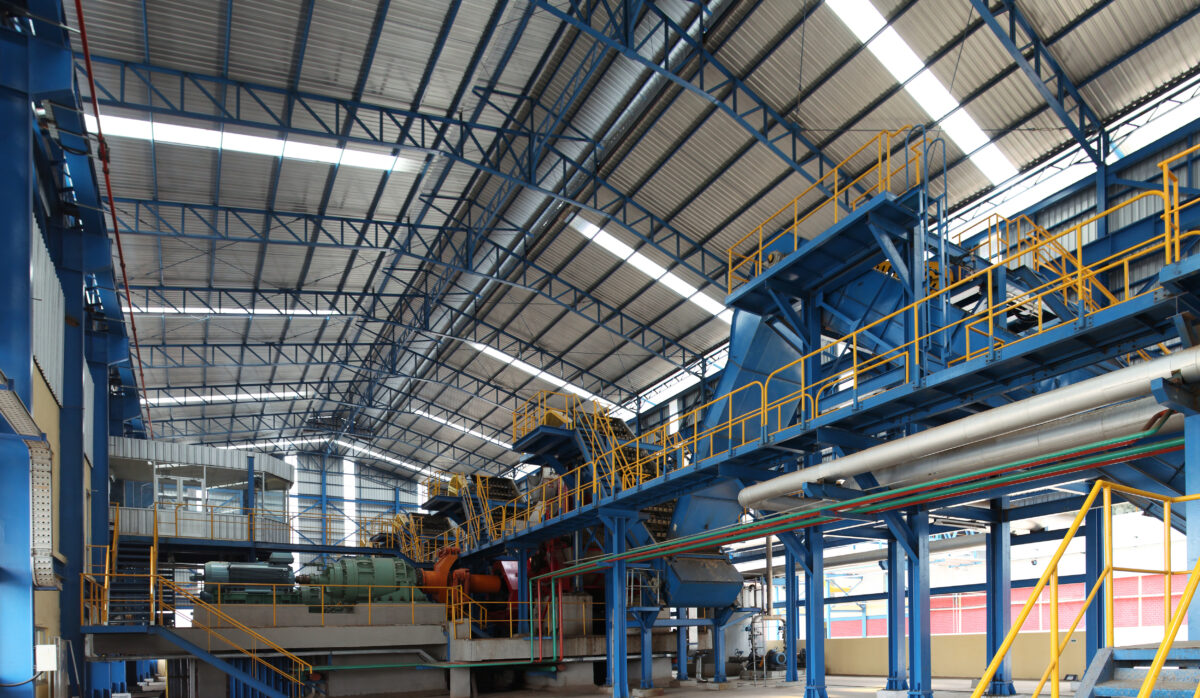 The Food Industry is not safe from the risk of combustible dust. In fact, according to Food Engineering, some food ingredients create more combustible dust than coal. Not only do food production facilities need to maintain robust housekeeping for hygienic purposes, but also because fugitive dust poses a massive risk to the safety of the facility itself. In fact, Dust Safety Science found that in 2021, 49.5% of all combustible dust events were in the Food and Agriculture industries.
The Food Industry is not safe from the risk of combustible dust. In fact, according to Food Engineering, some food ingredients create more combustible dust than coal. Not only do food production facilities need to maintain robust housekeeping for hygienic purposes, but also because fugitive dust poses a massive risk to the safety of the facility itself. In fact, Dust Safety Science found that in 2021, 49.5% of all combustible dust events were in the Food and Agriculture industries.
What Foods Are Most at Risk?
Before you determine how at-risk you are, you should be aware if there is a risk. So, how do you know if you have combustible dust? Well, there’s a good chance you already know – or OSHA does!
If you want to know for sure, you should conduct a Dust Hazard Analysis (DHA). OSHA requires a DHA per the NFPA 652 Standard on Combustible Dust. A DHA is the first step in understanding the risks you’re facing and the actions you should take. During the process, you’ll need to evaluate the dust in your facility as well as your processes. As a result, you’ll have a detailed report of any potential risks and the steps necessary to mitigate any identified risks.
Here are some of the most common food ingredients that contain combustible dust:
Grain
Grain dust includes wheat, barley, cornmeal (and dried corn), flour, oats, and more. Including dried corn, grain is the most produced crop in the United States, meaning there is a significant amount of facilities that produce grain dust in the U.S. and around the world. . Grain dust can be very small, therefore, a huge amount of surface area is exposed to oxygen, making it incredibly combustible. According to Setting Safety Standards, grain dust poses the most significant safety risk in grain production.
“Of all the hazards associated with grain handling, the most serious one is also the most difficult for those outside the grain business to understand. It is grain dust. This dust, generated whenever grain is handled, is easier to ignite and results in a more severe explosion than equal quantities of TNT.”
Sugar
When you consider sugar dust, powdered sugar offers an excellent visual. It’s light and travels well – too well if you’ve ever tried adding it quickly to a recipe. The dust migrates, seemingly of its own accord, and is incredibly difficult to control. Dust build up in sugar processing is inevitable without a robust dust management plan.
Standard table sugar isn’t explosive; it will only catch fire at 662 degrees Fahrenheit – a temperature not likely to occur under normal operating conditions in a factory and is generally low risk. But the dust made from sugar – and yes, powdered sugar, as well – has a similar surface area to some grains. This means that sugar manufacturing facilities are at equal risk of a combustible dust event as grain.
Others
These two aren’t the only ingredients that pose a combustible dust hazard. Alfalfa, herbs, hops, and even beet pulp produce combustible dust. If your product is ground down into light, fine particles, its dust will likely be carried through the air. If it’s a dry material or dries during production, you should be especially attuned to any build up.
Again, to be 100% sure, you should have a DHA conducted at your facility, but chances are you’ll be able to determine if you have a dust build up problem just by looking around your facility.
 Of course, dust build up isn’t the only concern when it comes to combustion.
Of course, dust build up isn’t the only concern when it comes to combustion.
As the T.V. show, Mythbusters discovered in 2008, you may be surprised by the foods that can be flammable or combustible. As it turns out, when you combine powdered coffee creamer with just the right amount of air and a heat source, the combustion event that occurs is astonishing. In the full video, you’ll see a mushroom cloud explosion (as seen in the .gif) that sent the whole build team running.
Dust Incidents in the Food Production Industry
As they say, those who don’t learn from history are doomed to repeat it. You may be thinking, “How dangerous is dust, really?” Failing to manage combustible dust in your facility properly can be deadly.
Imperial Sugar in 2008
Perhaps the most notable case of a combustible dust disaster in recent U.S. history occurred on February 7, 2008, at the Imperial Sugar refinery in Wentworth, Georgia. 14 people were killed, and 38 were injured – including 14 with life-altering injuries.
According to the review conducted in the aftermath of the explosion, “The explosion was fueled by massive accumulations of combustible sugar dust throughout the packaging building.” Clumps of sugar would occasionally block the conveyor belt and spill sugar onto the floor. On the day the event occurred, those clumps of sugar blocked the conveyor belt, dispersing the sugar into a confined area and the sugar’s dust into the air. The dust then came into contact with an overheated bearing surface, which acted as a source of ignition, resulting in the devastating explosion.
 Bartlett Grain Co. L.P. in 2011
Bartlett Grain Co. L.P. in 2011
On October 29, 2011, a grain dust explosion at the Bartlett Grain Co in Atchison, KS, killed six employees and hospitalized two others.
OSHA’s report stated, “Bartlett Grain Co. L.P. faces five willful and eight serious safety violations cited by the U.S. Department of Labor’s Occupational Safety and Health Administration. The willful violations include allowing grain dust – which is nine times as explosive as coal dust – to accumulate, using compressed air to remove dust without first shutting down ignition sources, jogging (repeatedly starting and stopping) inside bucket elevators to free legs choked by grain, using electrical equipment inappropriate for the working environment and failing to require employees to use fall protection when working from heights.” The incident at Bartlett Grain illustrated the importance of not just managing dust but controlling it properly.
Tiwana Oil Mills Pvt. Ltd in 2019
Though not in the United States, a more recent combustible dust event on May 28, 2019, in Kharauri village, Punjab, India. This incident happened at a grain feed factory, and even though it was the boiler that exploded first, according to Dust Safety Science, a secondary explosion was caused by dust accumulation. The plant supervisor was killed, and nine more people were injured.
(If you’re interested in hearing more from Chris Clooney, who founded and operates Dust Safety Science, check out our webinar with him here.)
How You Can Prevent Catastrophic Events in Food Production Facilities
One of the best ways to eliminate the risk of a combustible dust event is to prevent the accumulation from ever happening. Of course, you won’t be changing how you produce the foods or ingredients you handle – so you’ll need something that prevents it from accumulating.
SonicAire Fans do just that.
With a SonicAire fan system in place, your facility will no longer struggle with dust accumulation. We are so confident in that assertion that we offer a 100% compliance guarantee with our design and installation. That guarantee should ease your mind during OSHA inspections. But more than that, it will provide peace of mind and a new level of safety for your employees and your plant.
After all, with proper dust management, the tragedies mentioned above could have been completely avoided or greatly minimized with better dust management.
BarrierAire, the Protective Air Barrier
Due to thermal currents (in broader terms, the concept that “heat rises”), dust will naturally travel up into overhead spaces. Our fans create an air barrier that we have named BarrierAire, that prevents dust from rising into the hard-to-reach places in your facility. SonicAire Dust Control Fans oscillate and rotate to create an air barrier that forces dust back to the ground, where it’s easily swept up as part of your facility’s regular clean-up.
You can see more about how SonicAire fans operate in the video below.
An Engineered and Fully Automated Solution
Our proven process is simple. SonicAire’s engineers evaluate your facility and design a custom system just for you. They’ll account for every unique corner and piece of equipment in your facility, making your SonicAire system a perfect fit for the ingredients you handle and how you do it.
According to “The State of Conveying” report, “The overwhelming challenge in conveying materials is cleaning and maintenance for 54% of food processing professionals, while a connected challenge of downtime is second at 33%.” Those percentages tell us that maintaining a clean facility isn’t just about the safety and risks of combustible dust (though that’s a vital concern) but also about lost production dollars.
Right now, downtime for your facility due to cleaning may be critical to your plant’s safety and profitability – but it doesn’t need to be.
Want to learn how SonicAire dust control fans can help your food production facility maintain a safer, healthier, and more efficient work environment? Click here for a Complimentary Dust Management Plan and ROI Analysis, you can also contact us with your questions or for more information about our products.
The Real Cost of Manual Dust Cleaning
It isn’t until you sit down and start adding up all of the costs the problem becomes apparent.
SonicAire Fans – A Cost-Effective Alternative
We’re not going to lie to you. Installing a SonicAire Dust Control Fan System requires an investment. There are very few facilities that can get by with a couple of fans. But the long-term benefits speak for themselves.
SonicAire fans either run for specified periods during the day or all day, depending upon your operations and dust production level. However, they use two different tactics to prevent combustible dust buildup in overhead areas.
First, they clean off higher surfaces with continual airflow. This prevents buildup and eliminates the cleaning of these areas. Second, a properly engineered system creates an Air Barrier to prevent warm air currents from bringing dust up into overhead spaces.
Let’s look at how they impact the costs we’ve highlighted above.
Measuring the Difference
Each facility is different. In manufacturing and processing, operations produce varying levels and types of fugitive dust. But each facility is likely overspending on manual cleaning or simply not cleaning enough.
When you consider the labor, equipment, and lost productivity that goes into manual cleaning practices and then add in the insurance costs, potential fines, and employee dissatisfaction. Is manually cleaning your facility really saving you money?
We’re confident our combustible dust control systems will save your facility money even with the initial investment to purchase and install. But, if you’re not 100% sold, we get it. That’s why we offer free dust management plans with ROI Analysis. These engineered plans recommend the amount and placing of fans to ensure maximum protection from dust buildup.
Click here to request your Free Dust Management Plan.
Or contact us to discuss dust control solutions for your facility.
The Food industry is not safe from the risk of combustible dust. In fact, according to Food Engineering, some food ingredients create more combustible dust than coal. Not only do food production facilities need to maintain robust housekeeping for hygienic purposes, but also because fugitive dust poses a huge risk to the safety of the facility itself. In fact, Dust Safety Science found that in 2021, 49.5% of all combustible dust events were in the Food and Agriculture industries.
What Foods Are Most at Risk?
Before you determine how at-risk you are, you should be aware if there is a risk. So, how do you know if you have combustible dust? Well, there’s a good chance you already know – or OSHA does!
If you want to know for sure, you should conduct a Dust Hazard Analysis (DHA). OSHA requires a DHA per the NFPA 652 Standard on Combustible Dust. A DHA is the first step in understanding the risks you’re facing and the actions you should take. During the process, you’ll need to evaluate the dust in your facility as well as your processes. As a result, you’ll have a detailed report of any potential risks and the steps necessary to mitigate any identified risks.
Here are some of the most common food ingredients that contain combustible dust:
Grain
Grain dust includes wheat, barley, cornmeal (and dried corn), flour, oats, and more. Including dried corn, grain is the most produced crop in the United States, meaning there is a significant amount of facilities that produce grain dust in the U.S. and around the world. . Grain dust can be very small, therefore, a huge amount of surface area is exposed to oxygen, making it incredibly combustible. According to Setting Safety Standards, grain dust poses the most significant safety risk in grain production.
“Of all the hazards associated with grain handling, the most serious one is also the most difficult for those outside the grain business to understand. It is grain dust. This dust, generated whenever grain is handled, is easier to ignite and results in a more severe explosion than equal quantities of TNT.”
Sugar
When you consider sugar dust, powdered sugar offers an excellent visual. It’s light and travels well – too well if you’ve ever tried adding it quickly to a recipe. The dust migrates, seemingly of its own accord, and is incredibly difficult to control. Dust build up in sugar processing is inevitable without a robust dust management plan.
Standard table sugar isn’t explosive; it will only catch fire at 662 degrees Fahrenheit – a temperature not likely to occur under normal operating conditions in a factory and is generally low risk. But the dust made from sugar – and yes, powdered sugar, as well – has a similar surface area to some grains. This means that sugar manufacturing facilities are at equal risk of a combustible dust event as grain.
Others
These two aren’t the only ingredients that pose a combustible dust hazard. Alfalfa, herbs, hops, and even beet pulp produce combustible dust. If your product is ground down into light, fine particles, its dust will likely be carried through the air. If it’s a dry material or dries during production, you should be especially attuned to any build up.
Again, to be 100% sure, you should have a DHA conducted at your facility, but chances are you’ll be able to determine if you have a dust build up problem just by looking around your facility.
Of course, dust build up isn’t the only concern when it comes to combustion.
As the T.V. show, Mythbusters discovered in 2008, you may be surprised by the foods that can be flammable or combustible. As it turns out, when you combine powdered coffee creamer with just the right amount of air and a heat source, the combustion event that occurs is astonishing. In the full video, you’ll see a mushroom cloud explosion (as seen in the .gif) that sent the whole build team running.
Dust Combustion Incidents in the Food Industry
As they say, those who don’t learn from history are doomed to repeat it. You may be thinking, “How dangerous is dust, really?” Failing to manage combustible dust in your facility properly can be deadly.
Imperial Sugar in 2008
Perhaps the most notable case of a combustible dust disaster in recent U.S. history occurred on February 7, 2008, at the Imperial Sugar refinery in Wentworth, Georgia. 14 people were killed, and 38 were injured – including 14 with life-altering injuries.
According to the review conducted in the aftermath of the explosion, “The explosion was fueled by massive accumulations of combustible sugar dust throughout the packaging building.” Clumps of sugar would occasionally block the conveyor belt and spill sugar onto the floor. On the day the event occurred, those clumps of sugar blocked the conveyor belt, dispersing the sugar into a confined area and the sugar’s dust into the air. The dust then came into contact with an overheated bearing surface, which acted as a source of ignition, resulting in the devastating explosion.
 Bartlett Grain Co. L.P. in 2011
Bartlett Grain Co. L.P. in 2011
On October 29, 2011, a grain dust explosion at the Bartlett Grain Co in Atchison, KS, killed six employees and hospitalized two others.
OSHA’s report stated, “Bartlett Grain Co. L.P. faces five willful and eight serious safety violations cited by the U.S. Department of Labor’s Occupational Safety and Health Administration. The willful violations include allowing grain dust – which is nine times as explosive as coal dust – to accumulate, using compressed air to remove dust without first shutting down ignition sources, jogging (repeatedly starting and stopping) inside bucket elevators to free legs choked by grain, using electrical equipment inappropriate for the working environment and failing to require employees to use fall protection when working from heights.” The incident at Bartlett Grain illustrated the importance of not just managing dust but controlling it properly.
Tiwana Oil Mills Pvt. Ltd in 2019
Though not in the United States, a more recent combustible dust event on May 28, 2019, in Kharauri village, Punjab, India. This incident happened at a grain feed factory, and even though it was the boiler that exploded first, according to Dust Safety Science, a secondary explosion was caused by dust accumulation. The plant supervisor was killed, and nine more people were injured.
(If you’re interested in hearing more from Chris Clooney, who founded and operates Dust Safety Science, check out our webinar with him here.)
How You Can Prevent Catastrophic Events in Food Production Facilities
One of the best ways to eliminate the risk of a combustible dust event is to prevent the accumulation from ever happening. Of course, you won’t be changing how you produce the foods or ingredients you handle – so you’ll need something that prevents it from accumulating.
SonicAire Fans do just that.
With a SonicAire fan system in place, your facility will no longer struggle with dust accumulation. We are so confident in that assertion that we offer a 100% compliance guarantee with our design and installation. That guarantee should ease your mind during OSHA inspections. But more than that, it will provide peace of mind and a new level of safety for your employees and your plant.
After all, with proper dust management, the tragedies mentioned above could have been completely avoided or greatly minimized with better dust management.
BarrierAire, the Protective Air Barrier
Due to thermal currents (in broader terms, the concept that “heat rises”), dust will naturally travel up into overhead spaces. Our fans create an air barrier that we have named BarrierAire, that prevents dust from rising into the hard-to-reach places in your facility. SonicAire Dust Control Fans oscillate and rotate to create an air barrier that forces dust back to the ground, where it’s easily swept up as part of your facility’s regular clean-up.
An Engineered and Fully Automated Solution
Our proven process is simple. SonicAire’s engineers evaluate your facility and design a custom system just for you. They’ll account for every unique corner and piece of equipment in your facility, making your SonicAire system a perfect fit for the ingredients you handle and how you do it.
According to “The State of Conveying” report, “The overwhelming challenge in conveying materials is cleaning and maintenance for 54% of food processing professionals, while a connected challenge of downtime is second at 33%.” Those percentages tell us that maintaining a clean facility isn’t just about the safety and risks of combustible dust (though that’s a vital concern) but also about lost production dollars.
Right now, downtime for your facility due to cleaning may be critical to your plant’s safety and profitability – but it doesn’t need to be.
Want to learn how SonicAire dust control fans can help your food production facility maintain a safer, healthier, and more efficient work environment? Click here for a Complimentary Dust Management Plan and ROI Analysis, you can also contact us with your questions or for more information about our products.
The Real Cost of Manual Dust Cleaning
It isn’t until you sit down and start adding up all of the costs the problem becomes apparent.
SonicAire Fans – A Cost-Effective Alternative
We’re not going to lie to you. Installing a SonicAire Dust Control Fan System requires an investment. There are very few facilities that can get by with a couple of fans. But the long-term benefits speak for themselves.
SonicAire fans either run for specified periods during the day or all day, depending upon your operations and dust production level. However, they use two different tactics to prevent combustible dust buildup in overhead areas.
First, they clean off higher surfaces with continual airflow. This prevents buildup and eliminates the cleaning of these areas. Second, a properly engineered system creates an Air Barrier to prevent warm air currents from bringing dust up into overhead spaces.
Let’s look at how they impact the costs we’ve highlighted above.
Measuring the Difference
Each facility is different. In manufacturing and processing, operations produce varying levels and types of fugitive dust. But each facility is likely overspending on manual cleaning or simply not cleaning enough.
When you consider the labor, equipment, and lost productivity that goes into manual cleaning practices and then add in the insurance costs, potential fines, and employee dissatisfaction. Is manually cleaning your facility really saving you money?
We’re confident our combustible dust control systems will save your facility money even with the initial investment to purchase and install. But, if you’re not 100% sold, we get it. That’s why we offer free dust management plans with ROI Analysis. These engineered plans recommend the amount and placing of fans to ensure maximum protection from dust buildup.
Click here to request your Free Dust Management Plan.
Or contact us to discuss dust control solutions for your facility.
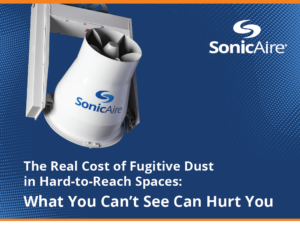
GET YOUR FREE GUIDE:
The Real Cost of Fugitive Dust in Hard-to-Reach Spaces
What You Can’t See Can Hurt You
To help protect your workplace, we’ve compiled the following resource, The Real Cost of Fugitive Dust in Hard-to-Reach Spaces: What You Can’t See Can Hurt You. In it, we identify seven ways fugitive dust is likely impacting your facility and its profitability.
These costs go beyond housekeeping and explain why you should be preventing dust buildup to protect the bottom line, not just to stay in compliance.


 Of course, dust build up isn’t the only concern when it comes to combustion.
Of course, dust build up isn’t the only concern when it comes to combustion.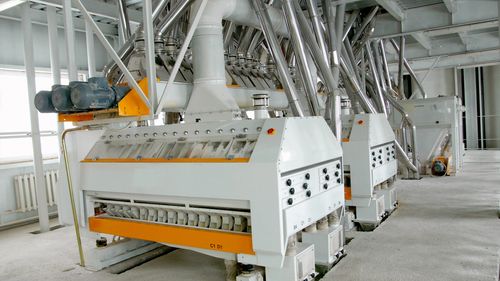 Bartlett Grain Co. L.P. in 2011
Bartlett Grain Co. L.P. in 2011